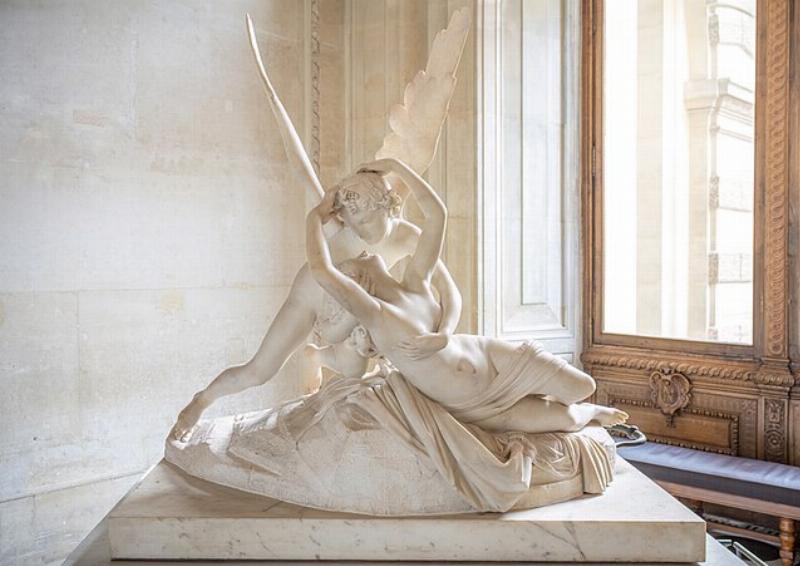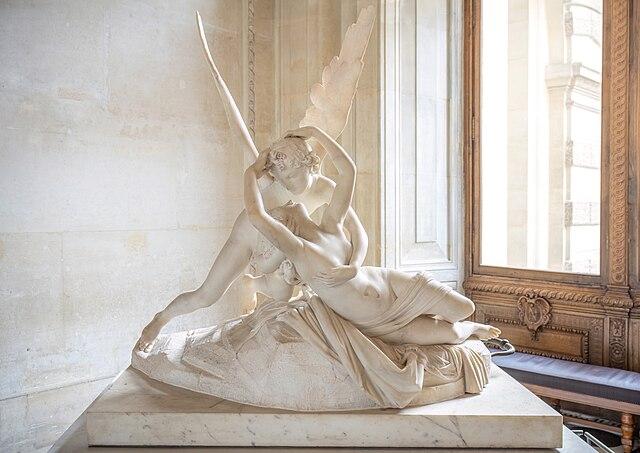


Early in the 21st century, we have an apparent lack of “living culture.” (We appreciate past accomplishments, but only the active creation of new works qualifies as “living.”) Millions still crave beauty; only long-dead artists provide it. Art-lovers standing for hours in the early morning cold and snow to gain admittance to the 1996 Vermeer exhibit — only to be turned away because the National Gallery was full up for the day — resembled a depression-era breadline.
During the 1930s, 40s, and 50s, there existed productive figures in the arts, many of them household names, such as composers Rachmaninoff, Stravinsky, Prokofiev, Shostakovich, Sibelius, Nielsen, Gershwin, and Aaron Copeland; poets Edna St. Vincent Millay, Robinson Jeffers, and Robert Frost; writers George Orwell, Aldous Huxley, H.G. Wells, Hemingway, Steinbeck, and Salinger; artists Edward Hopper, Charles Burchfield, Reginald Marsh, John Sloan, Thomas Hart Benton, Norman Rockwell and Andrew Wyeth.
If there are contemporary equivalents to these, they must be bound and gagged. It’s hard to say which is more remarkable: culture vanishing, or its disappearance unnoticed. This is a very unusual situation. The Medieval Period was once considered culturally blighted, but Romanesque and Gothic architecture were developed then, as well as Byzantine art, epic poetry, and music. Every period has contributed something, but now most of us would be hard pressed to name one great — or even outstanding — living poet, novelist, composer, or artist, let alone an entire flock of them as in the previous paragraph.
The most likely cause of this cultural eclipse was the changing relation between artist and society — with the artist in “heroic” opposition. Beauty became stigmatized as a “crowd-pleaser.” Sentiment was ridiculed. Artists were told to express their inner self, instead of trying for something greater. If working within established tradition, they were admonished, “That’s already been done.” Such restrictions tied creativity in knots, and created a sorry, bitter, crabbed mentality that gags when faced with the loveliness of womanhood as celebrated by that great French master, Renoir, or jeers at Norman Rockwell’s portrayals of homespun values, such as Saying Grace; a boy and his grandmother saying grace in a truck-stop diner, observed by silent truckers with awe and curiosity; the finest Christian painting of the 20th century.
Even the idea of relative quality disappeared. In 1964, when I told an art history professor I hoped to become a better artist by studying the old masters, he shot back, “What do you mean good, better, best? Let’s not start out with an inferiority complex!” Too late I thought of replying, “It’s not a complex if you really are inferior.” In 2020, a fellow artist (eight years my junior) offered this wise counsel: “You seem to spend a lot of time comparing yourself to the old masters. Compare and despair, Greg! We’re not supposed to paint like they did...” — and suggested that I was already as good as them. (Don’t I wish!) Attention artists everywhere: those old masters were only expressing themselves — just as you’re doing — and who’s to say their selves were better than yours? Everything is beautiful in its own way!
That’s a sure-fire recipe for mediocrity. Every one of those old masters compared their work to previous achievements, some making copies well into middle age — and even incorporated elements from previous masters into their own work. When Michelangelo was on his way to visit a collection of antique statuary, he said “I am going to school.” Throughout his work are echoes of the ancient Belvedere Torso and the Laocoön sculptural complex — the excavation of which Michelangelo actually witnessed. So Michelangelo’s “inferiority complex” helped him become what his contemporaries believed him to be, and many since — the greatest artist who ever lived.
With their 1908 invention of Cubism, Picasso, and Braque could be seen as the first cultural Marxists; their deconstruction of traditional visual values exactly paralleled what the Frankfurt School tried with social values beginning in the 60s. We are now witnessing a great revulsion toward the damage wrought by deconstructionists. As society is being restored, so should our culture be revived. There are reports of the younger generation becoming drawn to Christian worship, a religion which gave artists subjects resulting in images of such precious beauty one need not be Christian to love them. A Christian art comeback? It could happen.
To artists of the Italian Renaissance, the unearthing of ancient sculptures was an exciting revelation, as if the lost continent of Atlantis had risen from the bottom of the sea. The past has now become a foreign country for many, buried by too many boring lectures, but young artists should try to break through that unfamiliarity to revisit the glories of the previous 2,500 years, not just of Europe, England and America, but of China, Japan, Korea — an unlimited universe of options and inspirations. Doing so requires enough spine to reject tired calls for “challenging the spectator.” That would indeed be a revolution — the real thing.

Image: Public domain.
